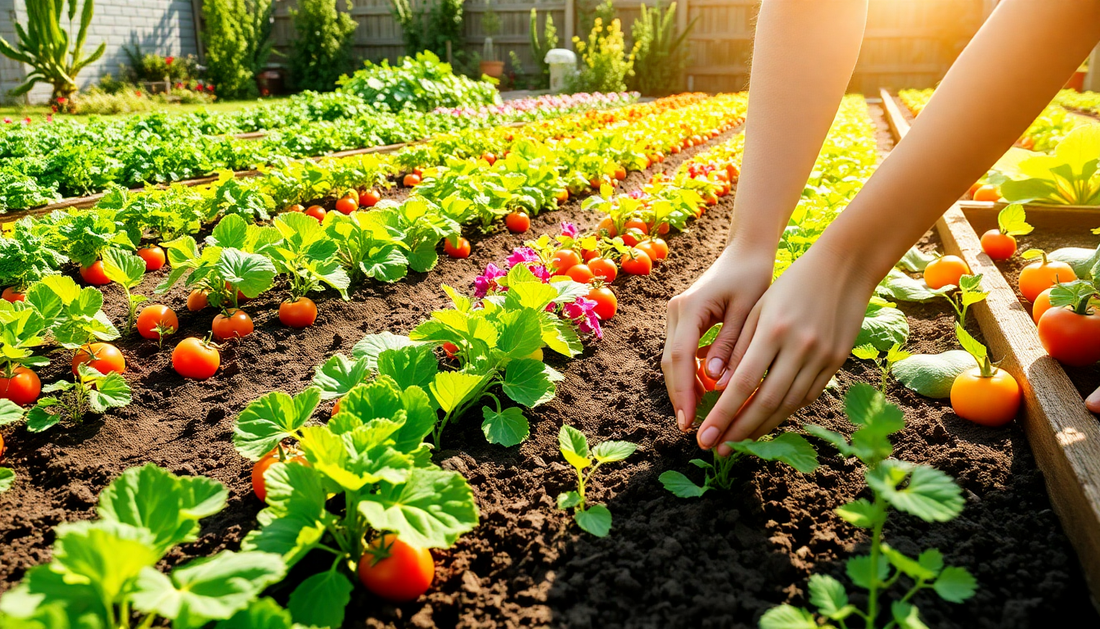
Grow Your Own Veggies: A Step-by-Step Guide to Starting a No-Dig Vegetable Garden
Share
In today's fast-paced world, where convenience often trumps sustainability, it's easy to forget the simple pleasures of growing your own food. But what if I told you there's a way to create a thriving vegetable garden without all the back-breaking work of traditional gardening? Welcome to the world of no-dig gardening, where you can enjoy a bountiful harvest with minimal effort.
At Idyl, our mission is to empower urban and suburban dwellers to reconnect with nature and take control of their food supply. We believe that no-dig gardening is the key to unlocking the joy of homegrown produce, and we're here to guide you every step of the way.
The Benefits of No-Dig Gardening
Traditional gardening often involves tilling the soil, which can disrupt the delicate balance of nutrients and microorganisms that are essential for healthy plant growth. No-dig gardening, on the other hand, is a more sustainable approach that preserves the integrity of the soil while still allowing you to grow a wide variety of vegetables.
Here are just a few of the benefits of adopting a no-dig gardening method:
Improved Soil Health
By avoiding the use of heavy machinery and minimizing soil disturbance, no-dig gardening helps to maintain the natural structure and fertility of the soil. This, in turn, supports a thriving ecosystem of beneficial microorganisms, earthworms, and other soil life, which are crucial for nutrient cycling and plant growth.
Reduced Weed Growth
No-dig gardening relies on a thick layer of organic mulch to suppress weed growth, eliminating the need for frequent weeding. This not only saves you time and effort but also helps to prevent the spread of weed seeds and reduce the use of harmful herbicides.
Enhanced Water Retention
The layered structure of a no-dig garden helps to improve water retention, reducing the need for frequent watering. This is especially beneficial in areas with limited water resources or during periods of drought.
Increased Productivity
By creating an optimal growing environment for your plants, no-dig gardening can lead to higher yields and a more bountiful harvest. This means you'll be able to enjoy a steady supply of fresh, nutrient-dense vegetables throughout the growing season.
Reduced Greenhouse Gas Emissions
Traditional tilling releases carbon dioxide into the atmosphere, contributing to climate change. No-dig gardening, on the other hand, helps to sequester carbon in the soil, making it a more eco-friendly option for the environmentally conscious gardener.
Getting Started with No-Dig Gardening
Ready to dive into the world of no-dig gardening? Here's a step-by-step guide to help you get started:
Step 1: Choose the Right Location
Select a sunny spot in your garden or yard that receives at least 6 hours of direct sunlight per day. Avoid areas with heavy foot traffic or near trees with extensive root systems, as these can compete with your vegetable plants for nutrients and water.
Step 2: Prepare the Soil
If your chosen location is currently covered in grass or weeds, start by removing the top layer of vegetation. You can do this by covering the area with a thick layer of cardboard or newspaper, which will smother the existing plants and create a solid foundation for your no-dig garden.
Step 3: Build Your Raised Bed
No-dig gardening often involves the use of raised beds, which can be constructed using a variety of materials, such as untreated wood, stone, or even repurposed pallets. The ideal depth for a raised bed is between 6 and 12 inches, as this will provide enough soil volume for your plants to thrive.
Step 4: Add Organic Matter
The key to a successful no-dig garden is to create a nutrient-rich, well-draining soil. Start by adding a 2-3 inch layer of compost or well-rotted manure to the top of your raised bed. This will provide a rich source of organic matter and beneficial microorganisms to support plant growth.
Step 5: Layer Your Mulch
Next, cover the compost layer with a 4-6 inch layer of organic mulch, such as straw, shredded leaves, or wood chips. This mulch will help to suppress weed growth, retain moisture, and gradually break down to further enrich the soil.
Step 6: Plant Your Veggies
Once your raised bed is ready, you can start planting your favorite vegetable varieties. Be sure to space your plants according to their individual needs, and consider companion planting to maximize the use of your garden space.
Step 7: Maintain Your Garden
Ongoing maintenance of your no-dig garden is relatively simple. Regularly replenish your mulch layer as it decomposes, and water your plants as needed, being mindful of the soil's moisture levels. You may also want to add a top-dressing of compost or organic fertilizer every few months to keep your plants well-fed.
Embracing the No-Dig Lifestyle
Starting a no-dig vegetable garden is just the beginning of your journey towards a more sustainable and self-sufficient lifestyle. By embracing the principles of no-dig gardening, you'll not only enjoy a bountiful harvest of fresh, nutrient-dense produce but also contribute to the health of the planet.
At Idyl, we're here to support you every step of the way. Whether you're a seasoned gardener or a complete beginner, our team of experts can provide you with the tools, resources, and guidance you need to create a thriving no-dig garden. Visit our online shop or contact us today to learn more about our selection of high-quality gardening supplies and our personalized gardening services.
Together, let's cultivate a greener, more resilient future, one no-dig garden at a time.
